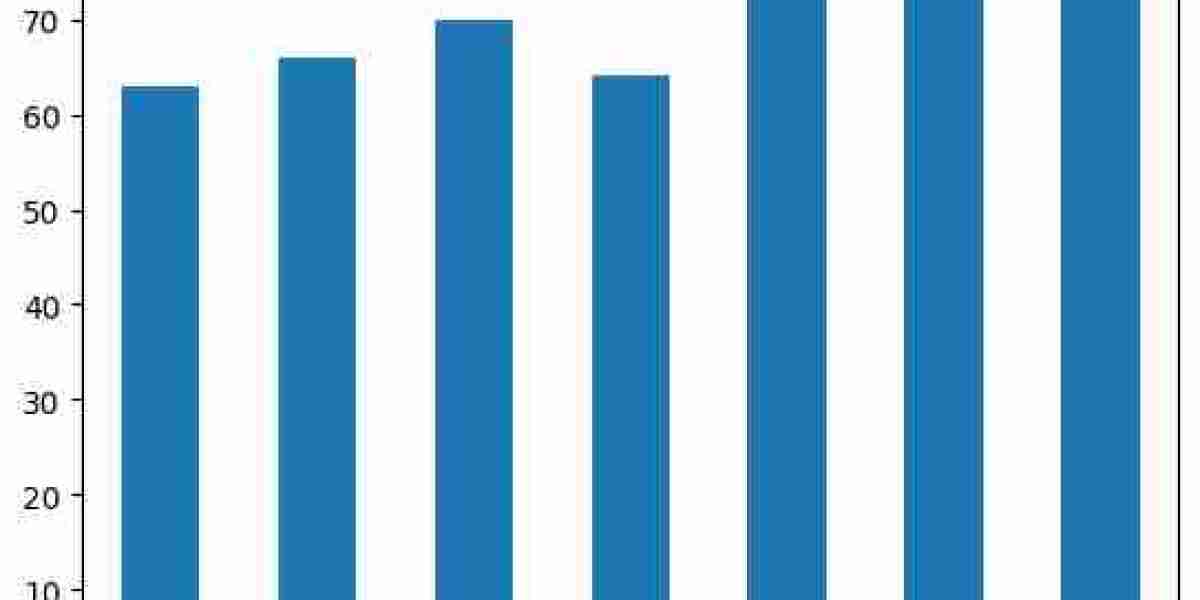The global healthcare industry is experiencing a revolutionary shift with the rise of robotic-assisted surgery (RAS), particularly within the domain of laparoscopic procedures. As hospitals and surgical centers embrace robotics to enhance precision and reduce complications, a significant market opportunity is emerging: the rising demand for advanced, high-precision laparoscopic instruments.
This transformation is driving the rapid development and expansion of the laparoscopic devices market, where innovation in surgical tools and integration with robotic platforms are reshaping the future of minimally invasive surgery.
The Evolution of Laparoscopic Surgery
Traditional laparoscopic surgery, often referred to as "keyhole surgery," involves performing procedures through small incisions using a camera and specialized instruments. While this method offers many benefits over open surgery—such as shorter recovery times, lower infection risks, and reduced hospital stays—it also has its limitations.
Conventional laparoscopic instruments rely on the surgeon’s dexterity and hand-eye coordination, which can be challenging in complex procedures. Movements are restricted by the rigid nature of tools and limited visualization, often requiring high levels of training and experience.
To overcome these limitations, robotic-assisted surgery has emerged as a transformative solution, offering greater flexibility, enhanced visualization, and precise control. This evolution has created a new wave of demand for specialized laparoscopic devices that are compatible with robotic systems.
How Robotic-Assisted Surgery Is Shaping the Market
Robotic platforms, such as the da Vinci Surgical System, enable surgeons to control instruments via a console with a 3D, high-definition view of the surgical field. Robotic arms can move with greater articulation than the human wrist, allowing for complex procedures to be performed with higher precision and minimal invasiveness.
This level of control opens up vast potential for device manufacturers to design and supply instruments that meet the unique demands of robotic-assisted laparoscopic surgery. These include:
Articulating and wristed instruments that allow for greater range of motion
Enhanced visualization tools, including 3D and 4K cameras
Energy-based devices optimized for robotic interfaces
Miniaturized tools for pediatric and single-incision surgeries
Disposable and modular components for infection control and efficiency
The need for these instruments is growing rapidly as more hospitals adopt robotic systems and as surgical teams demand tools that enhance both precision and workflow.
Expanding Application Areas
Initially, robotic-assisted laparoscopic surgery was primarily used in urology and gynecology. Today, its application has broadened significantly, encompassing general surgery, colorectal procedures, bariatric surgery, thoracic interventions, and even cardiac surgery.
This expansion has further increased the demand for diverse and specialized instruments tailored to different anatomical regions and procedural needs. The trend also presents opportunities for device manufacturers to develop procedure-specific toolkits and customizable solutions that align with robotic capabilities.
Market Drivers Supporting Growth
Several key factors are driving the growth and opportunity in this space:
1. Technological Innovation
Ongoing innovation in robotics, imaging systems, and AI is enabling the development of smarter and safer laparoscopic devices. Surgeons now expect tools that offer haptic feedback, real-time data analytics, and enhanced ergonomics, creating new product development avenues.
2. Rising Procedure Volumes
The global volume of laparoscopic surgeries is increasing due to the growing burden of chronic diseases such as cancer, obesity, and gastrointestinal disorders. As more patients become eligible for robotic-assisted procedures, the demand for high-precision devices will continue to rise.
3. Increased Adoption of Robotic Systems
While robotic systems were once considered a luxury for premium hospitals, competitive pricing and technological advancement have made them more accessible. This democratization is accelerating their adoption across private and public healthcare settings worldwide.
4. Surgeon and Patient Preference
Surgeons appreciate the ergonomic benefits and precision offered by robotic systems, while patients benefit from quicker recovery and better cosmetic results. These preferences are accelerating the replacement of traditional tools with advanced, robot-compatible alternatives.
5. Favorable Investment Climate
Medical device companies, startups, and investors are pouring capital into robotics and related technologies. This strong investment ecosystem is fueling rapid innovation and expansion within the laparoscopic devices sector.
Challenges and Considerations
Despite the promising outlook, the market also faces challenges that stakeholders must address:
High cost of robotic systems and instruments, limiting access in low-resource settings
Lengthy training curves for surgeons transitioning to robotic platforms
Regulatory hurdles in getting new devices approved across global markets
Standardization issues between different robotic platforms and tool compatibility
To tap into the full market potential, companies must focus on cost-effective innovation, collaborative training models, and designing tools with cross-platform compatibility.
Key Players and Competitive Landscape
Leading players in the laparoscopic devices market—including Intuitive Surgical, Medtronic, Johnson & Johnson (Ethicon), Stryker, Olympus, and Zimmer Biomet—are actively investing in robotic-integrated solutions. Meanwhile, a wave of new entrants and startups are developing next-generation robotic systems, such as CMR Surgical’s Versius and Medtronic’s Hugo platform.
These competitive dynamics are accelerating the pace of innovation, and creating more opportunities for surgical instrument providers to carve out niche markets and introduce differentiated solutions.
The Future of the Market
Looking ahead, the convergence of robotics, artificial intelligence, and digital health will redefine the surgical landscape. Future laparoscopic instruments will likely be:
Smarter, with integrated sensors and data feedback
More personalized, adapting to the specific anatomy or surgeon preferences
Easier to sterilize or dispose, improving infection control protocols
More affordable, making advanced care accessible across all socioeconomic groups
As the technology matures, even tele-robotic surgery may become a reality, opening doors to cross-border surgical interventions and creating entirely new markets for precision tools.
Conclusion
The laparoscopic devices market is entering a new era of opportunity, driven by the rapid adoption of robotic-assisted surgery. As demand for high-precision, intelligent, and procedure-specific instruments continues to grow, manufacturers have an extraordinary chance to lead in this evolving sector. By aligning innovation with surgeon needs, patient outcomes, and cost-efficiency, stakeholders can capture long-term value and play a pivotal role in shaping the future of minimally invasive care.




